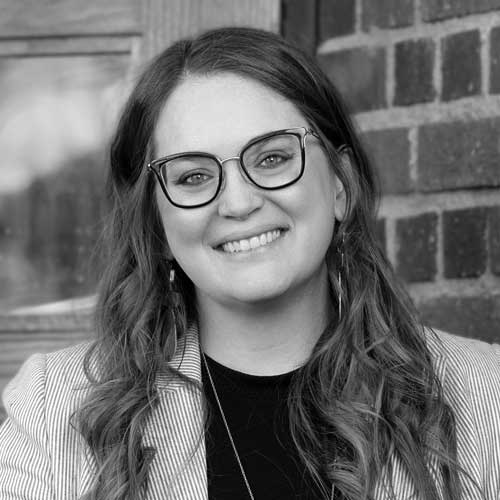Data from Utah’s Sandbox Shows Extraordinary Promise, Refutes Fears of Harm
 Last August, Utah made history as the first state to establish a regulatory sandbox, providing a space for lawyers and other professionals to deliver nontraditional legal services under the supervision of the state supreme court. A year later, numerous businesses and collaborations are up and running, providing a wide range of much-needed legal services. None of this would have been possible without the groundbreaking reforms passed last fall.
Last August, Utah made history as the first state to establish a regulatory sandbox, providing a space for lawyers and other professionals to deliver nontraditional legal services under the supervision of the state supreme court. A year later, numerous businesses and collaborations are up and running, providing a wide range of much-needed legal services. None of this would have been possible without the groundbreaking reforms passed last fall.
Despite trepidation from some in the legal community around the idea of nonlawyers providing legal services, with harm to consumers cited as one of the biggest risks, newly released data from the sandbox proves those fears unfounded—and that, in fact, the opposite is true. Every month, the Office of Legal Services Innovation publishes a report detailing the cumulative activities in the sandbox; the most recent report, which presents data through July 2021, clearly indicates that sandbox providers, far from inflicting harm, are bringing a variety of safe legal services to thousands of consumers.
The Data
So far, 30 entities have been approved by the Utah Supreme Court—of these, four are categorized as low risk, 12 as low–moderate risk, 13 as moderate risk, and one as high risk. The Office of Legal Services Innovation utilizes a risk-based regulation framework when assessing entities for recommendation to the court, considering both the likelihood of harm—as well as the degree of harm—that applicants pose to consumers. These assessments will be continuously adjusted as the Office of Legal Services Innovation receives more data from the sandbox.
Data from the report indicates that these innovative providers are meeting a spectrum of needs, including end-of-life planning (19.6%); business-related matters such as intellectual property, contracts and warranties, and entity incorporation (22.3%); and marriage and family (15.0%). Other types of legal services currently available via the sandbox include education, real estate, domestic violence, and immigration.
The data also makes it clear that these services are in high demand—thus far, over 3,000 legal services have been sought from about 2,500 unduplicated clients. The ability to utilize technology, too, is making a substantial impact, with over 550 legal services delivered by software (with lawyer involvement).
There have been a few complaints made to the Office of Legal Services Innovation, with two of those being harm-related. At the current rate of legal needs being met, there’s been one complaint per 1,000 services delivered; one harm-related complaint for every 1,500 services delivered. The report states that the “entity response to harm-related complaints has been adequate and acceptable as related to mitigation,” which suggests that harm-related complaints are being remedied and/or plans are being implemented to prevent such harms from occurring in the future.
The Providers
Utah’s sandbox has opened up a world of possibilities when it comes to how to practice law, and demonstrates how innovation, technology, and professionals who aren’t lawyers can work alongside attorneys and ensure consumers have real access to the entire spectrum of legal needs. 1Law, one of the first entities approved by the supreme, provides free and low-cost legal services to assist clients in completing court documents, and also offers related legal advice using chat-bots, instant messaging, and nonlawyer staff. And, the organization has more than 50% nonlawyer ownership—an impossibility under most states’ current regulatory framework.
Other participants in the sandbox include Bee Bankruptcy Law, whose owner applied to participate in order to give his paralegal employee a 10% ownership interest in the business, and LawPal, which provides a platform to generate legal documents in contested and uncontested divorce and custody cases, eviction cases, and debt-related property seizure cases.
Another participant is Holy Cross Ministries, a nonprofit organization that will train two community health workers to serve as bilingual medical-debt legal advocates. These individuals will extend the important services they already provide within the Salt Lake City community by offering limited-scope legal advice about medical debt and collateral issues. According to an interview with Stacy Butler, director of the Innovation for Justice Program at the University of Arizona James E. Rogers College of Law, nearly 22,000 lawsuits are filed in Utah each year against people experiencing medical debt—a third of all debt-collection cases filed in the state.
The Evaluation
Although it’s been just over a year, it’s undeniable that the sandbox is providing thousands of consumers with a variety of legal services, creating new jobs for lawyers and other types of professionals, and equipping courts, policymakers, and other justice system stakeholders with incredibly valuable data. This data can be utilized not only by the Office of Legal Services Innovation to continuously assess and evaluate applicants to and participants in the sandbox, but also by other states who are looking to reimagine the way legal services are delivered.
IAALS, as part of our Unlocking Legal Regulation project, is an independent third-party evaluator in Utah—we’re analyzing data gathered from the sandbox in order to understand how the regulatory structure works in practice and whether it is achieving its intended goals.
Through our evaluation—led by IAALS’ director of research, Logan Cornett—we are looking at the entire legal landscape in Utah: the risk and harm these entities do or don’t pose to consumers, their effects on the market, and how well they can address the state’s access-to-justice crisis. Our hope is that the evaluation findings will be used both for continuous improvement to the new regulatory structure in Utah and to inform regulatory reform efforts across the country.
We still have a long way to go and a lot of data to collect, but what we’ve seen so far does suggest that re-regulation has the potential to meaningfully increase access to justice and, importantly, the data shows that these kinds of innovations can be done safely. In just nine months, more than 2,500 people have received help with housing, immigration, healthcare, discrimination, employment, and a gamut of other issues. Lawyers are partnering up with other professionals to create new types of businesses, and technology is enabling them to do their jobs more efficiently. Instances of harm are rare—and, when they do occur, are being monitored and utilized by the Office of Legal Services Innovation to continually improve. As more states look to re-regulation as a means to increase access to legal services, the data from Utah’s sandbox—and the real people’s lives it is impacting—should be a strong push in that direction.





